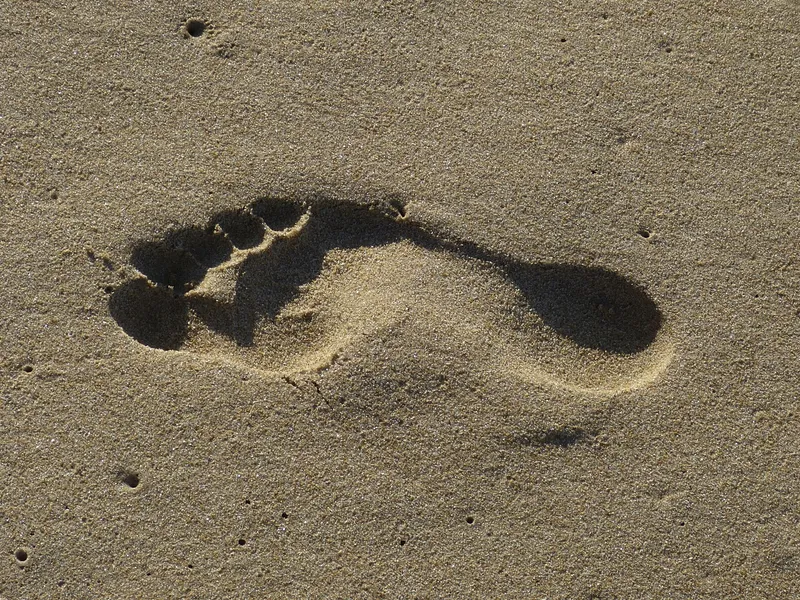
A new archaeological find in New Mexico has added to a growing body of evidence that modern humans have been present in the Americas for much longer than the conventionally-accepted duration of 13,000 years, with the discovery of a set of 23,000-year-old footprints made by children playing in the tracks of a giant sloth. The find not only pushes back the date of humans entering the Western Hemisphere, but it also provides a snapshot of daily life for the youth of ancient peoples.
The footprints were excavated last year in New Mexico’s White Sands National Park: located within the southern bounds of the White Sands Missile Range, the park has long been studied for the fossilized footprints of the various creatures that had lived in the area, including extinct animals such as camels, dire wolves, ground sloths, lions, mammoths and saber-toothed cats. But amongst the long-expired fauna that roamed the area are the footprints of ancient humans, people that were in the area long before ice-free corridors opened up in the Laurentide Ice sheet, allowing human migration stemming from the Bering land bridge to occur.
The layer of sediment that the tracks appear in have been dated using clumps of seeds that were found in the same stratum; individual seeds can move up and down through the soil over time, making their use as a dating tool problematic. But the excavation team found clumps of seeds still attached to the stems of their parent plant, making the date of their location in the strata more reliable. Belonging to an aquatic grass called Ruppia cirrhosa, the seeds were dated to between 23,000 and 21,000 years ago, placing the people that made the accompanying footprints in the region nearly 10,000 years before anyone was assumed to be present.
But just as importantly, these tracks tell the story of not only when these ancient peoples lived, but also how they played: the footprints are made by a group of children that appear to be playing in water that pooled in the large paw prints of a giant ground sloth, as they accompany their teenage companions.
Up until the end of the last ice age, the White Sands area of New Mexico was considerably lusher than it is today, featuring streams, lakes and grasslands, making it home to numerous species of now-extinct megafauna. Amongst these creatures was the ground sloth, a much larger relative to the more familiar tree-climbing animals still around today; although this bear-like creature is estimated to have only been half of the 6-meter (20-foot) length that some species could reach, it was still large enough to leave tracks large enough to form puddles for kids to splash around in.
The researchers were also surprised regarding the length of the occupation of the area, with other signs of habitation indicating that people had thrived there for around 2,000 years before the area dried out completely, a result of the warming of the climate as the Pleistocene drew to a close.
“It means that people were using this area for a very long time, and thousands of years before humans were thought to have been present on the continent,” explains Tommy Urban, study co-author and researcher with Cornell University. “We had always considered the possibility, though.”
Principal academic in hominin palaeoecology at Bournemouth University and study co-author Sally Reynolds says that what they discovered in the relationships between humans and the animals they shared the landscape with “tells us a lot about human’s place in the ecosystem at the point when we arrived in the Americas. The prints at White Sands are so unique in terms of getting us behavior and not just morphology, it means that we can actually sense these sorts of attitudes of one species to the other.”
But Reynolds also asks “how did [humans] end up that far south that early? [This was] much further than we expected, much earlier than we expected. Which means that we’re underestimating the ability of Homo sapiens to expand, [to] migrate. Clearly, we’re a very adaptable species. And proof of this is that we’re considering migrating to another planet!”
Subscribers, to watch the subscriber version of the video, first log in then click on Dreamland Subscriber-Only Video Podcast link.
I read about this several months ago and found it to be perfect little ‘slice of life’ long ago, and brought home the humanity of America’s ancient people. In addition, this discovery backed up Graham Hancock’s research in his best-selling book, ‘America Before.’